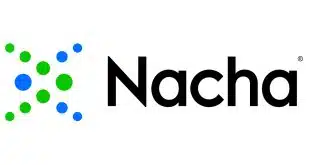U.S. financial institutions have made considerable progress in fighting identity fraud, but still lag in their use of one of the most potent weapons in their arsenal: putting anti-fraud controls in the hands of the consumer. That's according to research released on Tuesday by Javelin Strategy & Research. The Pleasanton, Calif.-based firm, which annually measures the ability of the country's largest banks' to prevent, detect, and resolve identity fraud, found the most progress in the area of prevention, with 79% of banks meeting the firm's criteria, up from 52% last year. Prevention methods Javelin looks for include multifactor authentication, bans on collecting full Social Security numbers, and mobile-banking programs. Indeed, though only 48% of large banks offered mobile banking a year ago, that number has shot up to 72%, indicating a surge in bank adoption of the technology in 2009. Javelin lends the most weight to prevention methods, since they have the most potential to cut fraud losses, but also scores banks on their capabilities in detection and resolution. This year, it found small improvements in both categories, with 56% meeting its standards in detection compared with 50% in 2008 and 87% doing so in resolution, a 1-point improvement from last year. Detection methods looked for include credit monitoring and account alerts to customers. Resolution methods include next-day replacements of debit cards (now at 100%, up 32 points from last year) and next-day availability of stolen funds. Still, while the big banks have made some strides in providing real-time alerts, they still leave much to be desired in this key criterion, according to Javelin. Alerts can detect?and stop?fraud almost immediately when banks notify customers of activity on their accounts that those customers aren't doing or haven't recently conducted. Such alerts, often in the form of text messages, can be particularly effective when delivered to customers' mobile phones. “When customers are able to self-detect fraud, the period of misuse on their accounts averages 56 days less than when notified by an outside institution,” says Javelin in its report. Some 65% say such alerts are very to extremely useful, according to the firm's research. But while more financial institutions are offering alerts concerning balances, card-not-present transactions, transaction size, and online transfers, fewer are sending notices of crucial activity like statement notices, new-account setups, and the addition or deletion of a payee for online bill pay. The number of banks offering notices of a new account being established in the customer's name fell to 32% this year from 56% in 2008. Yet, “[n]ew account fraud is the most difficult to detect and poses the greatest emotional impact to the victim,” says the report. Similarly, just 32% of banks notify customers when someone has added a bill-payment payee, a drop from 48% last year. “Fraudsters have recently been adding new bill payments to take over and unobtrusively drain accounts,” the report says. James Van Dyke, president at Javelin, tells Digital Transactions News that the drop in these critical areas can be partly explained by the fact that a number of new banks were added this year to the group of 25 that the firm measures. This was done to replace institutions like Washington Mutual Inc., Wachovia Corp., and National City Corp. that had been acquired. But banks' reluctance to offer real-time alerts also stems from an “old-guard” attitude among bank executives, he adds, who are now learning the same lesson executives in the music business learned when the iPod and music-sharing sites first appeared. “This is a marketing opportunity disguised as a security problem,” Van Dyke says. “The first payments provider that makes alerts as usable as Internet music is going to win by a landslide. Somebody will break ranks and do it.” The 25 banks analyzed for the report account for about half the dollar value of all U.S. deposits, Javelin says. The firm ranked Bank of America Corp. first overall, followed by Regions Financial Corp. and Wells Fargo & Co.
Check Also
Klarna Added to eBay’s U.S. Marketplace and other Digital Transactions News briefs from 4/23/25
The e-commerce giant eBay Inc. said it will widen its global partnership with payments platform Klarna AB …





